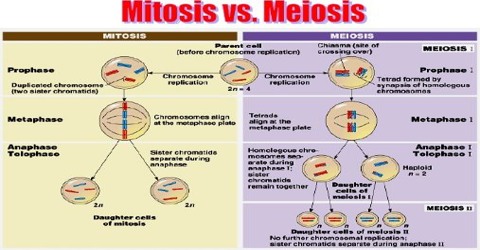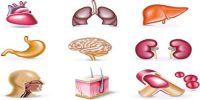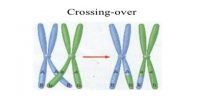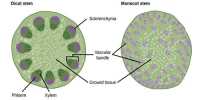Metaphase is the third phase of mitosis, the process that separates duplicated genetic material carried in the nucleus of a parent cell into two identical daughter cells. Metaphase-1 of meioses are the pairs of chromosomes (bivalents) become arranged on the metaphase plate and are attached to the now fully formed meiotic spindle. The homologous chromosomes pair together in prophase 1 of meiosis, but they do not throughout prophase 1 of mitosis.
Difference between Prophase of Mitosis and Prophase-1 of Meiosis
Prophase of mitosis
- It is a short phase and is not divided into any subphase. Each duplicated chromosome appears as 2 sister chromatids joined simultaneously.
- Pair formation in between homologous chromosomes does not occur as there is no attraction between them.
- Chiasma is not formed. During interphase, the DNA is replicated, along with the organelles necessary to divide. This includes the centrosome, within which the centriole gets replicated. With a replicated genome and organelles, the cell can begin mitosis.
- Crossing over does not occur. Mitosis occurs after interphase in eukaryotes.
- Part exchange does not occur in the chromosome. So gene arranges not remains unchanged.
- It has only one step. The first stage of mitosis is prophase, and it sets the stage for the later stages of mitosis. During interphase preceding mitosis, the chromosomes exist in a loose state.
- No pairing of homologous chromosomes takes place. No crossing over or a recombination event.
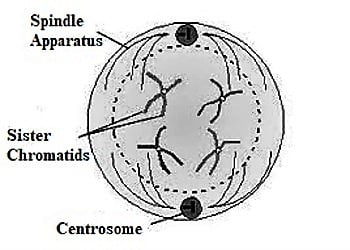
Comparatively short phase. At the onset of prophase, proteins related with the DNA are activated, and the DNA winds around them and bundles in dense shapes. Under a microscope, this stage can be seen as a darkening of different places in the nucleus.

Prophase-1 of meioses
- It is a long phase and is divided into the sub-phases. Homologous chromosomes each composed of 2 sister chromosomes come jointly as pairs. The resulting structure, consisting of four chromatids, is called a tetrad.
- Pair formation (synapsis) due to attraction occurs in between homologous chromosomes.
- Chiasma is formed. In the cytoplasm, the meiotic spindle, consisting of microtubules and other proteins, forms between the two pairs of centrioles as they migrate to opposite poles of the cell.
- Crossing over occurs. The duplicated homologous chromosomes pair and crossing-over occur. Crossing-over is the process that can give rise to genetic recombination. The nucleolus disappears during prophase I.
- Part exchange occurs, which changes the gene arrangement of the chromosomes.
- Its two steps such as prophase-1 and prophase-2. The nuclear envelope disappears at the end of prophase I, allowing the spindle to enter the nucleus. Prophase I is the longest phase of meiosis, typically consuming 90% of the time for the two divisions.
- Long phase divided into substages (Leptotene, zygotene. pachytene, diplotene, and diakinesis). It is the most complicated and longest phase of meiosis.
- The pairing of homologous chromosomes takes place. Synapsis, crossing over and recombination occurs.
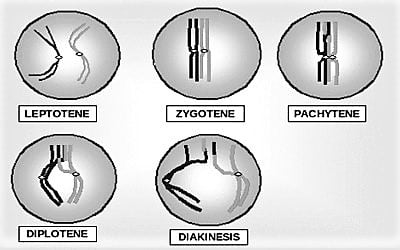
At the start of prophase I, the chromosomes have already duplicated. During prophase I, they coil and become shorter and thicker and visible under the light microscope.
